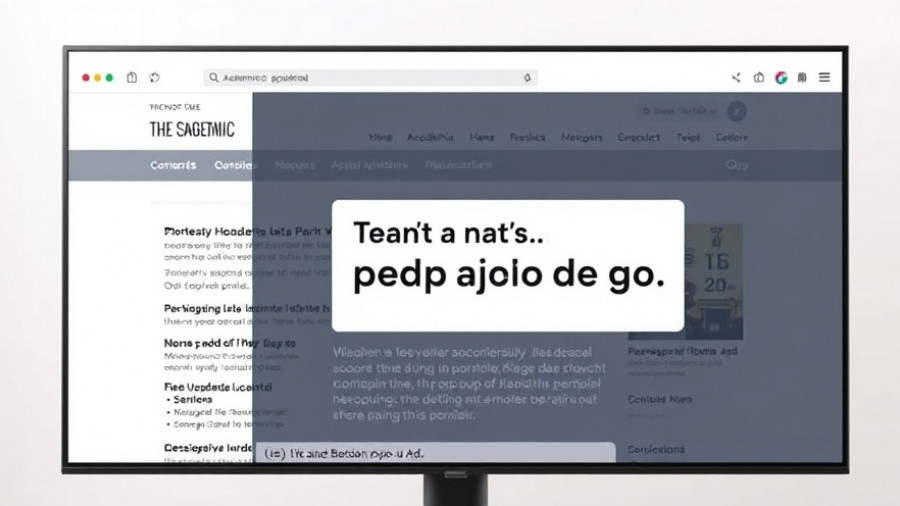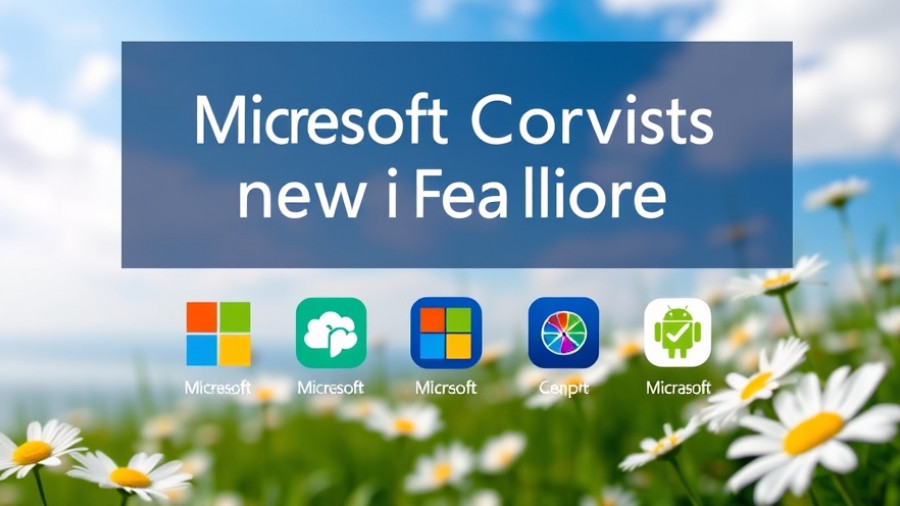
Microsoft's Bold Step into AI Development
In a significant move, Microsoft has unveiled its first in-house AI models, MAI-Voice-1 and MAI-1-preview, as part of a strategy to reduce reliance on external AI solutions and innovate within its own ranks. These announcements come amidst an escalating competition with tech giants such as OpenAI and Google.
Innovative Models Designed for Everyday Use
MAI-Voice-1 is a speech model that enhances user interaction in applications like the Copilot Daily feature, streamlining tasks through voice commands. Meanwhile, MAI-1-preview, which has been trained using an impressive cluster of 15,000 GPUs, is aimed at improving daily query responses in Copilot, making it more efficient for users to access the information they need at their fingertips.
The Journey Towards Self-Sufficiency in AI
Historically, Microsoft and other tech giants have relied heavily on partnerships for AI capabilities. By developing proprietary models like MAI-Voice-1 and MAI-1-preview, Microsoft shifts towards self-sufficiency, awakening a new era for AI-driven tools designed specifically for consumer interaction.
Contextualizing the Move in the Tech Landscape
With the rapid advancements in artificial intelligence, major players in the tech industry are continuously redefining their strategies to maintain competitive advantages. Google recently launched Bard while OpenAI’s ChatGPT continues to evolve, pushing Microsoft to carve out its space within the realm of AI. The innovation seen in Microsoft’s new models may signal a paradigm shift toward an ecosystem where companies enhance their offerings tailored to their unique platforms.
The Role of GPUs in AI Development
The utilization of 15,000 GPUs for training MAI-1-preview highlights the monumental resources dedicated to advancing AI technology. This hardware investment not only elevates the performance of these models but also underscores the commitment required to deliver robust AI functions. Amid discussions about sustainability and energy consumption in tech, the balance between advancing capabilities and environmental impact has never been more critical.
Future Predictions: What's Next for Microsoft AI?
As these new models roll out, Microsoft may increasingly focus on integrating AI deeply into its suite of products. Predictions indicate a possible expansion into sectors like healthcare, education, and beyond, where AI could transform user experiences. The continuous feedback from models like Copilot could enhance applications, allowing for smarter, more adaptive systems that cater to specific user needs and preferences.
The Importance of Consumer-Facing AI Solutions
Focusing on consumer-facing applications allows Microsoft to directly engage with users, gathering essential insights feedback that informs future developments. The AI landscape is shifting towards personalized experiences, and by leveraging user data effectively, Microsoft can refine its algorithms to better serve individual needs.
For tech enthusiasts, understanding Microsoft's latest advancements in AI signifies not just a competitive strategy but also highlights a broader transformation within the technology landscape, acknowledging the integral role of AI in everyday life.
As Microsoft continues to innovate, the implications of these advancements extend beyond the company itself, influencing consumer behaviors and expectations across the market.
 Add Row
Add Row  Add
Add 




Write A Comment